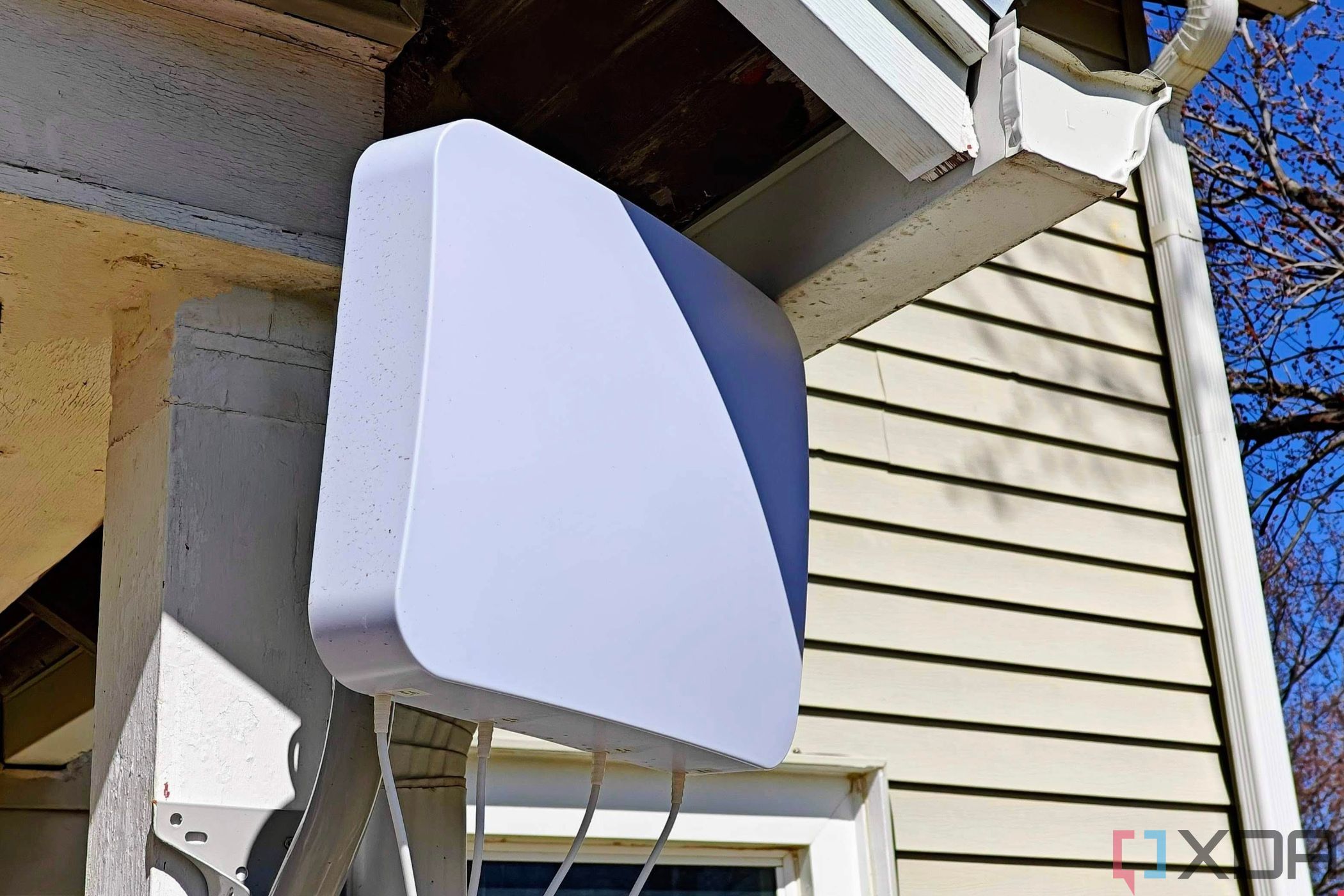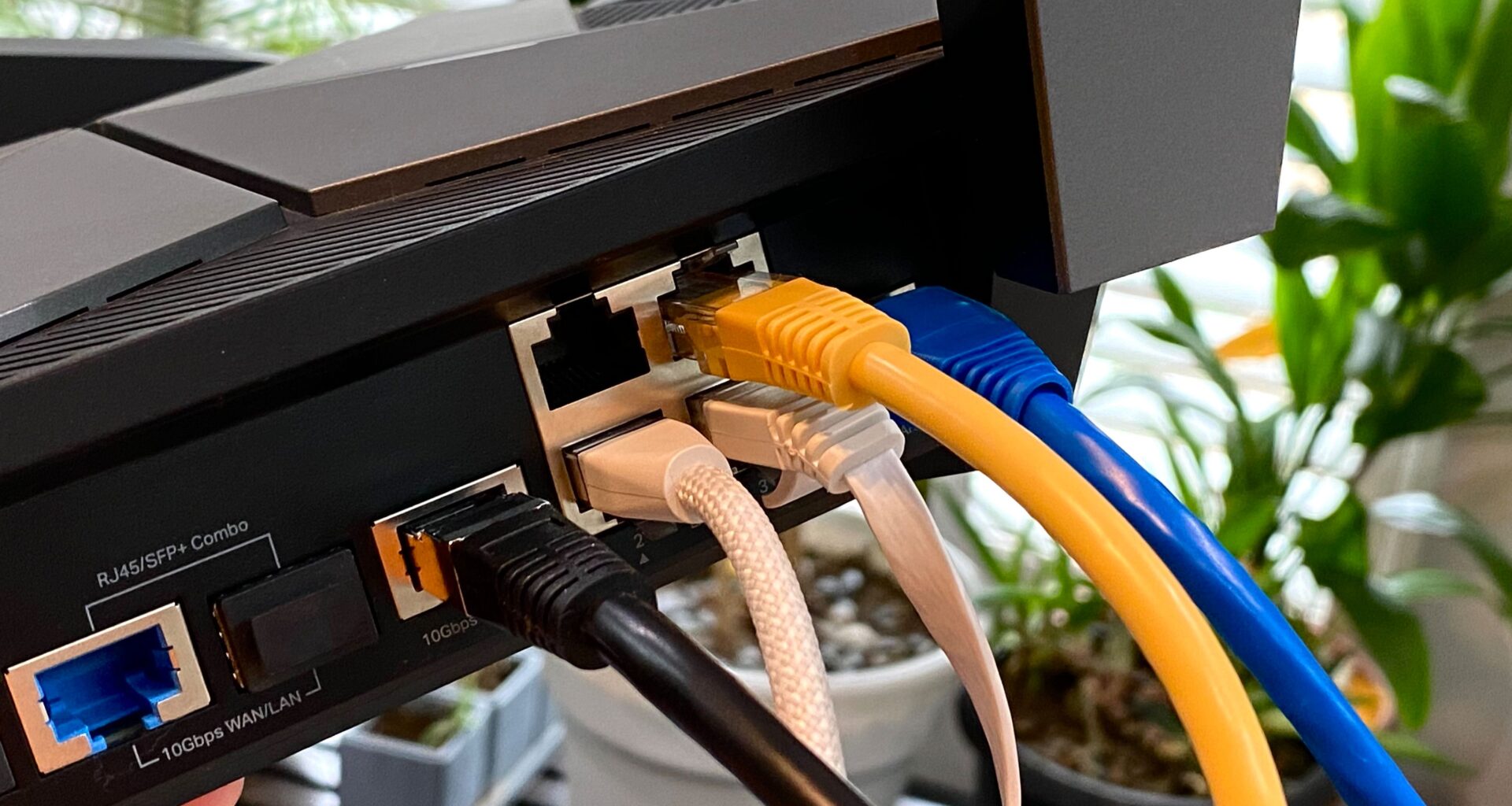Dealing with slow, laggy home Internet is the pits, and it can happen to any home network, from Multi-Gig capable connections to DSL. Even my home network slows down sometimes, and I’ve got 10GbE for some sections of it. But it’s not all about straight-line speeds, with the general responsiveness and reliability of your network being key to a good internet experience. Those things aren’t always easy to measure, but simple, quick fixes can get your slow network back to its best.
5
Not putting your router in a central position
The place where your ISP installed your Internet drop is rarely the best place for optimal Wi-Fi
No matter which W-Fi router you have, there’s one simple troubleshooting step that should be done before even thinking about upgrades. That’s to reposition your router to a more central area in your home, and move it to roughly chest height. That might be tricky depending on where the ISP put your internet hookup, but it’s well worth the extra effort on your part.
Okay, maybe two steps, because rebooting your router regularly is a good way to keep your network running smoothly. Also, check for firmware updates if your router isn’t new enough to automatically handle that.
New wireless protocols like Wi-Fi 8 are aimed at increasing the stability of your connection, but those routers and access points are some ways away from hitting the market, and will likely be expensive when they do. But adding a long cable to move your Wi-Fi router from the outside wall the ISP put it on, to somewhere closer to the center of your space will give all your devices a better chance of stable Wi-Fi, and you might find that’s the only fix you need to do.
4
Sticking with your ISP’s DNS servers
Every (milli)second counts when you’re talking about smooth browsing
Your browsing experience is also controlled by the Domain Name Service (DNS), which is often used by your ISP to limit what you can see, or using your DNS query data to sell targeted advertising. Even if they’re not doing this (but they probably are), self-hosting a DNS server comes with other benefits, including being able to use local domain names to address your NAS and self-hosted services, ad-blocking at the DNS level, and encrypting your DNS queries for privacy. It’s not guaranteed that it will improve your speeds, but it will remove any ISP shenanigans from the equation when set up correctly with DNS-over-TLS, or over-HTTPS, or over-QUIC for encrypting your requests so they can’t be read in transit.
3
Overloading the network with too many devices
Congestion is bad, whether it’s wireless, wired, or too much for your ISP plan
Most consumer-level routers have a hard cap on the number of devices they can support reliably before they start kicking things off the network temporarily. Often this can be as low as 50 devices, which wasn’t an issue before everything went wireless and the smart home clogged up the airwaves. Even if you’re not at the limit, it’s still worth checking which devices use more bandwidth than others, and deciding if you need to upgrade equipment or put restrictions on those devices.
And while you’re working out which devices and programs are using up bandwidth, it’s always a good idea to enable Qualty of Service (QoS) on your router. Most newer routers should support this feature, which identifies certain types of data packets and optimizes the network traffic so that things like video calling apps get priority, while larger data transfers for backups or downloads get deprioritized so they’re not hogging all the available bandwidth.
There are also a few other things to try, including forcing devices that don’t need fast Wi-Fi onto the 2.4GHz band, and ensuring that PCs, laptops, and phones are connected to the 5GHz or 6GHz band if you have it.
2
Hitting your data cap (or other ISP limits)
Some ISPs will throttle your connection if they detect filesharing programs or self-hosted services

Nobody likes slow internet speeds, but sometimes it’s not the fault of your networking hardware, and everything to do with your ISP and the plan you’re on. It’s unfortunate that many ISPs still institute data caps (especially on cable or fiber connections) because infrastructure and capacity are cheap nowadays, and those caps are a relic of the old days when it was expensive to use lots of bandwidth. Even cellular internet connections still have plenty of capacity, and the data caps on those have been increasing over time. It’s good that nobody is getting cut off until the next billing period anymore, but the throttling under fair use policies needs to stop.
Throttling could also happen because of other factors. If you’re on cable or other internet plans that use a shared infrastructure near your home, you could be throttled during peak usage times when everyone around you is also downloading or streaming video. There’s not much you can do about that other than change your ISP, or schedule bandwidth-heavy tasks like updates to occur during off-peak hours so you have more capacity for video and other uses. And many ISPs will throttle you if they see p2p filesharing from your connection. You could get around this to some degree by using a VPN to encrypt your traffic but even then you might still get throttled, and VPNs themselves aren’t always as speedy as your internet plan could be.
1
Using damaged cables or having weak Wi-Fi signals
Networking equipment needs maintenance, just like everything else
A damaged cable will hobble the best home network in the world, whether it’s the WAN connection to the internet drop the ISP put in, or one of the copper or fiber lines going around your home to various devices and network switches. I’ve had copper twisted-pair CAT cable break from tight bends, or from touching sharp edges or the tiny nails on carpet stays, and while fiber is generally quite tough, it can also break from pressure or a tight bend radius. If your internet comes in via coax, it could be physically damaged, or be picking up interference from nearby devices. Check all physical connections for damage, and it’s always worth having a few spare cables on hand to test with (or invest in a cable tester).
Wi-Fi signal issues can be harder to pinpoint, but generally they’re either caused by being too far from the broadcaster, interference from nearby routers, devices, and your home’s walls, or hardware that’s not able to keep up anymore. That last point is more likely if your router is older, as they’re not built for longevity. And if you’ve got a larger home, a mesh network or adding Wi-Fi extenders will give a better blanket of wireless signal across your space.
The Internet is a necessity for most households. Don’t let yours be slowed by simple mistakes
You don’t need an overkill home network setup or prosumer hardware to keep your home internet running smoothly. Most simple mistakes can be fixed with simple troubleshooting, and you’ll be back at your expected speeds in no time. Not every slowdown can be fixed without upgrades, however, and it’s generally a better idea to upgrade your router before thinking about moving to a higher tier on your internet plan, as newer routers have better features overall, and you might not notice the increased ISP plan without it.
